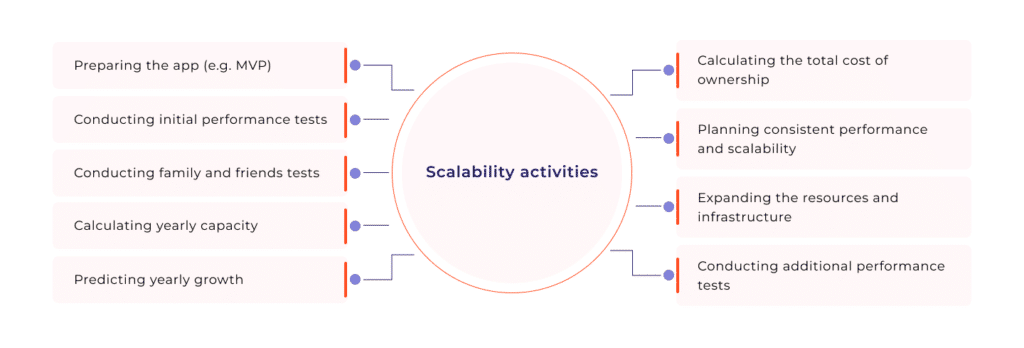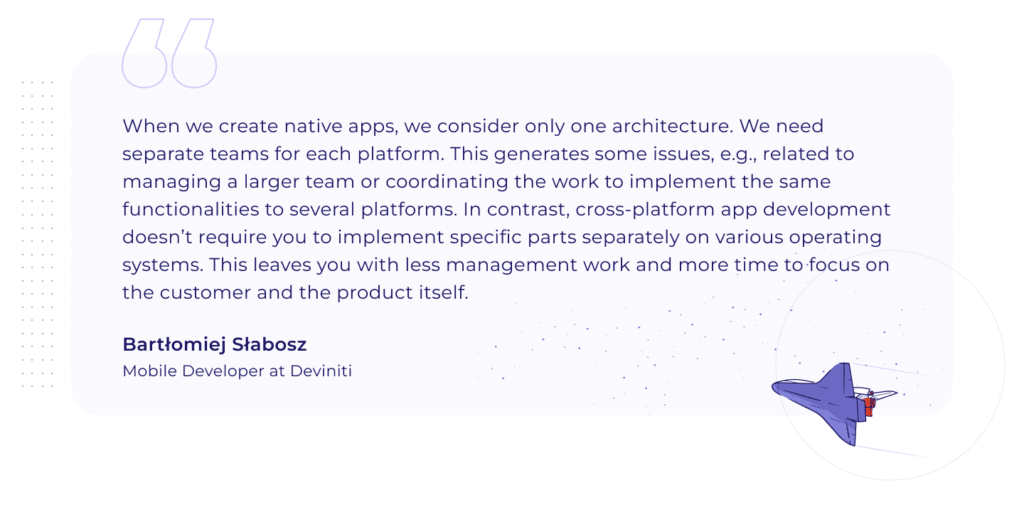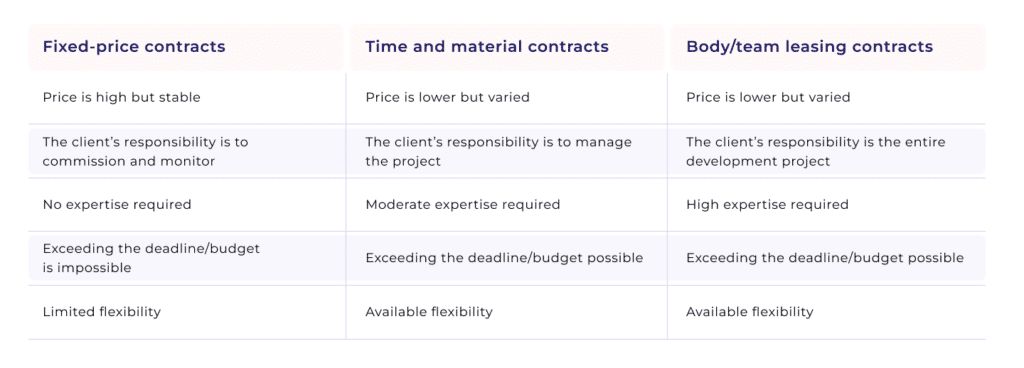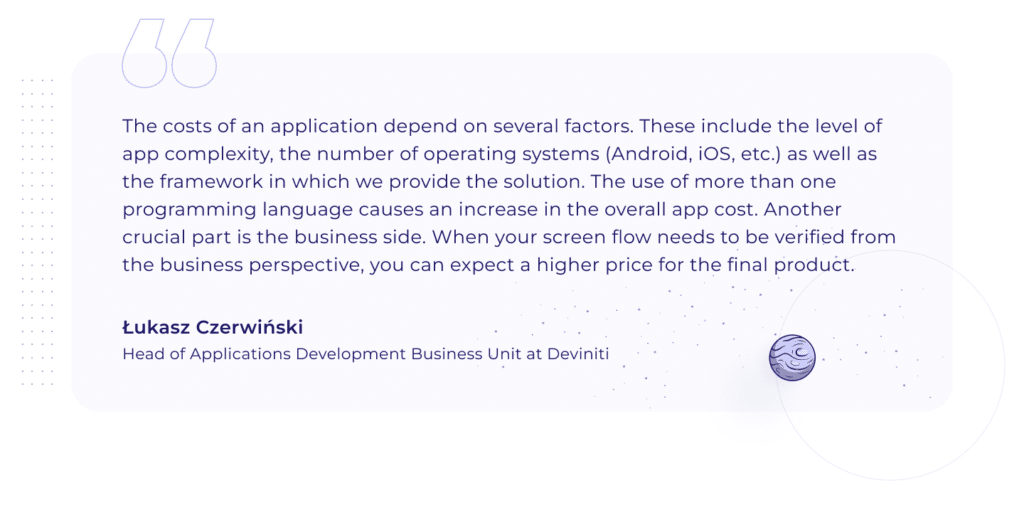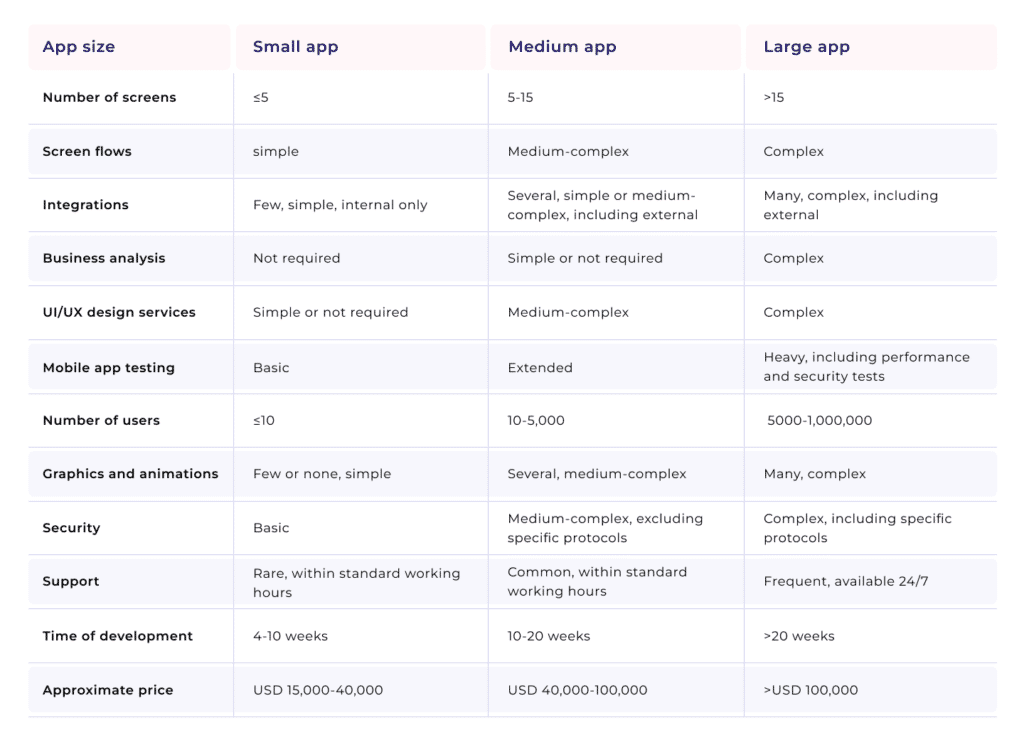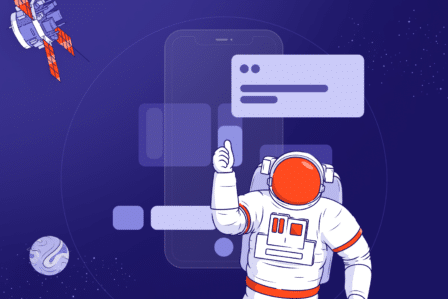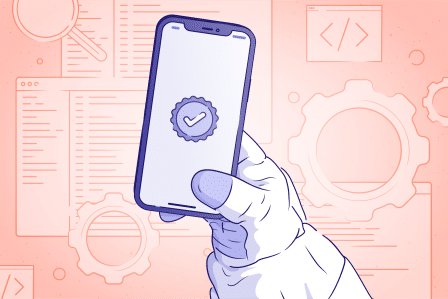How much does it cost to develop an app in 2023? – Deviniti answers

This article was updated on April 14, 2023.
“How much does it cost to develop an app?” is a question we often get. We would very much like to give you a specific number. However, the most suitable answer is the one that people love to say and hate to hear: “It depends.” Luckily, we will not leave you hanging. Instead, we will perform a mobile app development cost breakdown. Thanks to this, you can understand what you are paying for. Let us dive in!
When you think about the cost of app development, you might have a specific price tag in your head. You might even have found the app development cost of specific solutions while looking for mobile app developers. Nevertheless, the final cost is usually known at the very end. The initial quotation can be a spectrum that varies from several thousand dollars to hundreds of thousands of dollars. Why such a difference? Mobile apps might often seem alike to regular users. The real analysis starts when you consider the work of mobile app designers and developers. Only then can you understand where the cost comes from. If you wish to investigate application development in detail, here is your guide. In the meantime, let us analyze the process from the cost perspective.
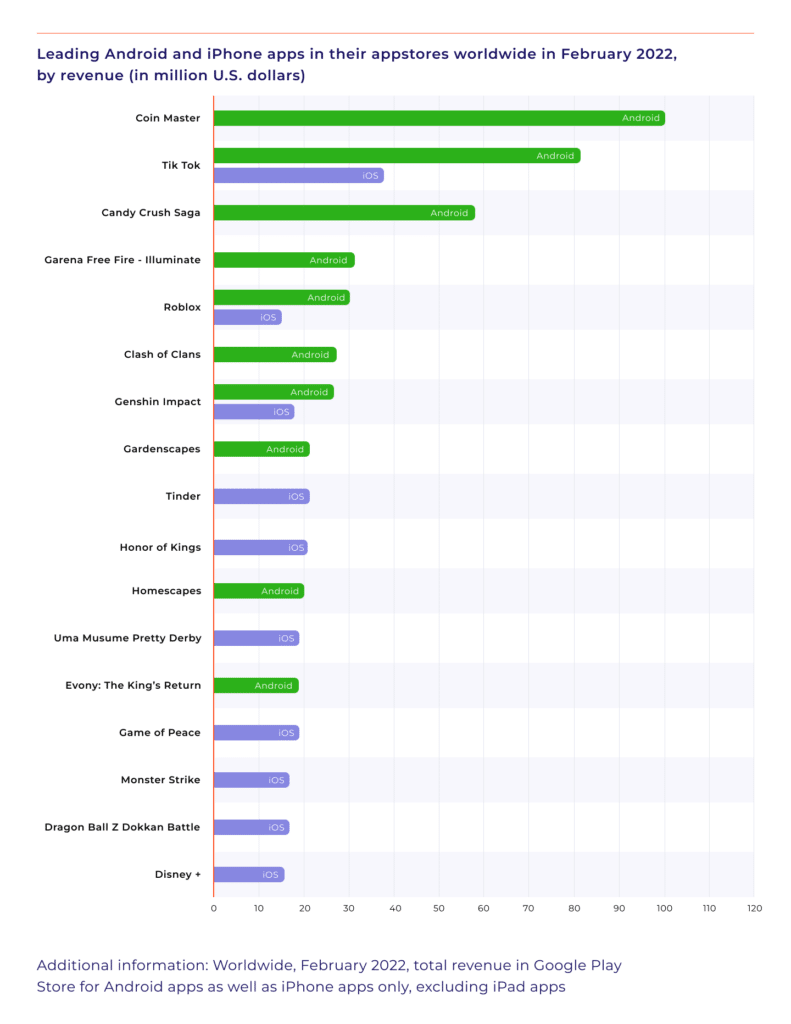
The structure of mobile apps
When you talk to a mobile app development agency about creating a mobile app for your business, you will probably receive a lot of questions in return. Don’t be surprised as there are many aspects to mobile app design and development, such as:
- The mobile app sizes
- The mobile app architecture
- The target operating systems
- The mobile app development process
- Entailed supportive processes
These terms may appear vague at first, but we will explain them. We will also demonstrate how a mobile app development company approaches the entire process. Custom mobile app development services aren’t cheap, so you should know what you are paying for.
Mobile app sizes
Although mobile apps are virtual rather than physical, they also come in sizes. Before we start comparing them in terms of cost, we need to know what makes up a small, medium, or large app:
- The number of screens
- Screen flow complexity
- The number of users
- Safety measures and API connections
- Graphical complexity
- Degree of analyses and support
Don’t let another list discourage you. We’ll tell you everything about each element and the ways it influences the app size and the cost of your custom mobile development.
The number of screens
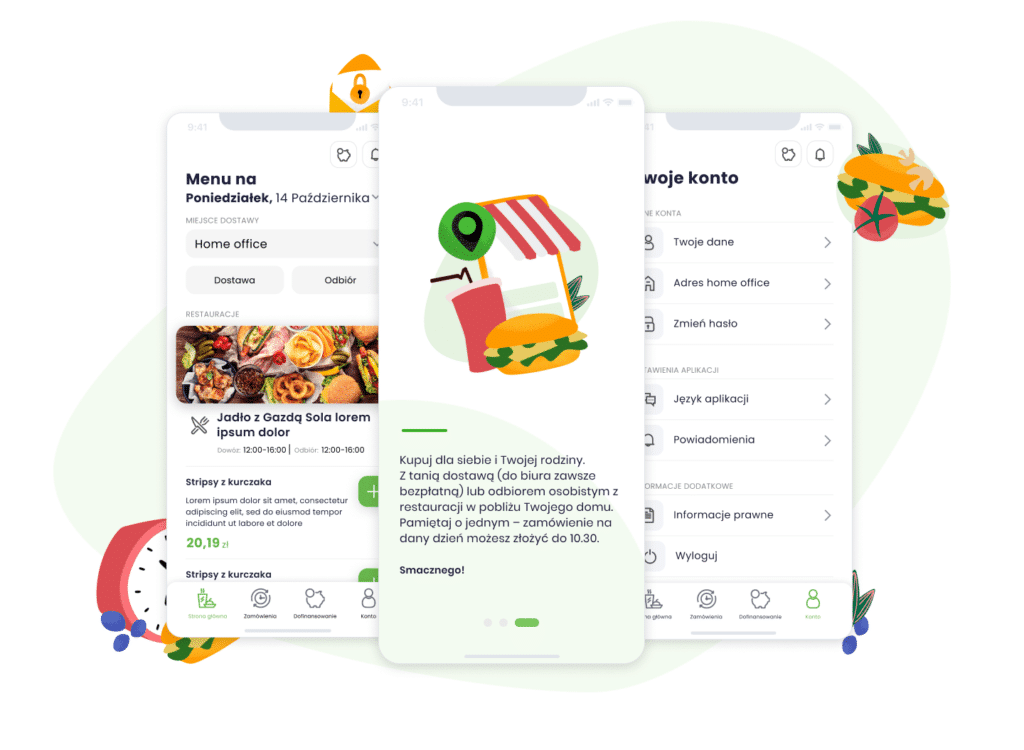
Every time you open a mobile app, you receive a specific screen. As you tap or swipe, you enter another one. Each screen must be designed separately and implemented into the app. Note that some screens require more effort than others. The more you have, the larger the app.
- Small app – up to 5 screens,
- Medium app – from 5 to 15 screens,
- Large app – over 15 screens.
The screen content also matters. When your mobile app developers prepare unique ones, it will increase the final cost.
Screen flow complexity
Now let’s see how the screens are organized. The method of connecting screens depending on the user’s interactions with the app is called a screen flow. You can find more about screen flows here.
A simple screen flow looks like a straight line. On the other hand, a complex screen flow reminds you of a web with many entangled elements. Reaching a given screen sometimes requires a combination of specific actions. You can always ask your mobile app developer for a screen flow diagram to understand your app. You can also look at some examples of such diagrams. More complicated screen flows are more expensive.
- Small app – simple screen flow (straight line),
- Medium app – medium-complex screen flow (small/sparse web),
- Large app – highly complex screen flow (large/dense web).
Good mobile app developers always discuss the screen flow with their clients. That way, you should be able to keep the custom mobile development process under control. Not to mention that your future users will be happier without an unnecessarily complicated screen flow.
The number of users
It might come as a surprise, but the number of users does matter to the mobile app design and development. An increased userbase requires additional resources like server infrastructures to keep the app running.
The problem is that you don’t always know the number of users from the start. You might experience an increase in the userbase following your company’s growth. You might want to think about introducing new servers or rebuilding the infrastructure once the mobile app for your business reaches a specific threshold.
- Small app – up to 10 users,
- Medium app – up to 5,000 users,
- Large app – up to 1,000,000 users.
In most cases, mobile app developers are prepared for the expanding userbase scenario. You can ask them about the available options.
Security issues and API integrations
Apps need protection against virtual threats. Hackers find many ways to breach the security of apps, e.g., through manipulating the source code or finding loopholes in authentication procedures. That’s why your app should include certain safety measures. Their importance increases proportionally to the amount of sensitive information the app contains: users’ data, credit card details, etc. You might have to enrich your custom mobile development with specific standards such as RASP or comply with international norms like GDPR. Some solutions require mobile app performance testing or security testing to ensure proper operation. If you are interested in the topic of testing, consider reading this article.

A related case is the mobile app API architecture. If you are not familiar with the term, API is an element that allows for communication between your app and other software. To make this possible, API calls for specific endpoints that take time and effort to be built. Some applications can work without API integration. Nevertheless, if you want your app to cooperate with your website, social media, etc., then API endpoints are a must. Many software providers offer ready-made endpoints. However, sometimes you will have to create one on your own.
Many apps include more advanced features such as login options, personal user accounts, in-app payment, reviews, or complex connections with external software. If you are planning a mobile app for your business without any of these, you don’t have to worry about major expenses here. Yet, introducing such features will increase the apps’ final cost.
- Small app – simple security measures, no external APIs,
- Medium app – medium-complex security measures (excluding RASP), several endpoints and API integrations,
- Large app – advanced security measures (including RASP), numerous endpoints, and API integrations, required mobile app performance testing or security testing.
Graphical complexity
Some companies want their applications to be, above all, practical. Others, especially those from the commercial sectors, prefer sparkling colors or bells and whistles to make their apps stand out. The unfortunate news is that the more you want to go crazy with your mobile app design, the more you will pay. Especially when you want the app to heavily reflect your company brand. Highly customized solutions are more expensive than generic ones.
Animations are particularly costly. If you want a mobile app for your business with lots of moving parts, you must prepare a budget for that. Animations involve the extensive efforts of UX/UI designers. These experts carefully plan how your app is going to look and work based on specific studies of human psychology, behavior tracking, etc. Their endgame is making the app mostly appealing so that it brings the highest possible positive impact on the users.
- Small app – no complex images and/or animations,
- Medium app – several complex images and/or animations, requires involving mobile app designers to some extent,
- Large app – many complex images and/or animations, requires constant work of mobile app designers.
If you want to explore the topic of software UX (including mobile UX), this article should help.

Ready to discuss mobile development?
We are always ready to talk with you! Tell us about your idea, and we will come up with a cost-efficient yet practical solution for your business!
Analyses and support
The level of analysis and support for your app is determined by several factors: its intended use, audience, etc. When your app is meant for enhancing business opportunities, it doesn’t need so much work. However, if your app is supposed to be the business itself, you should include business analysts as well as support personnel in the pool of your custom mobile app development services.
The largest apps usually demand heavy business analyses to ensure they meet business goals. What is more, when they have numerous users around the world, you might want your solutions to always run correctly. That’s why you can expect an offer of a 24/7 Service Level Agreement which you will have to take to ensure that your user base gets what it wants.
- Small app – little to no support needed in terms of business and production, occasional contacts with your mobile app development company about app fixes,
- Medium app – production and post-release app support needed, SLA required but only within standard working hours,
- Large app – complex business analysis and screen flow verification required, SLA needed 24/7.
The mobile app architecture
The mobile app architecture is simply how the app is built. It relates to the aforesaid matters like API, the userbase, or security measures. The non-functional requirements of an app also involve performance and scalability. When we have a second look at the API, the mobile development services should include extensive API documentation as well as backend availability and complexity. We’ll discuss these aspects so that you know what cost to expect.
Mobile app features
Most people download apps due to their features. An app feature is a specific action the solution can perform. Features aren’t equal in terms of complexity. Some of the simplest (and cheapest) features include creating user profiles, basic messaging, and receiving notifications. Some more complex features are in-app purchases or position tracking. The most demanding ones are video chats, review systems, and advanced messaging. The costs of your app increase proportionally to the complexity of the features you choose.
Mobile app performance
Performance means how fast your app acts and how well it responds to user input. The critical factor here is that the larger your app, the more likely it is to fail. You must get the best people on board and put some extra effort to ensure your app’s proper performance. That’s why you shouldn’t be surprised by higher costs or additional performance tests if you are commissioning a large mobile app for your business.
Earlier, we were talking about a situation when your app has more users than expected. Luckily, there is a way to make this process manageable. Scalability means the ability to reconfigure your app so that it can become usable for an increased number of your customers. If you are unsure about the success of your app, it’s better to make the app scalable just in case. Nevertheless, adding scalability to the overall custom mobile development enhances the final app cost.
On the other hand, working with the right software house will allow you properly assess the scalability costs. They can make the right predictions and calculate the entire scalability process, including the division into specific stages. The best course of action is to learn about your mobile app’s total cost of ownership (TCO), then compare it with your current budget and financial forecasts. If you don’t take these factors into account, you might get an app too small to handle future users or too large and waste your resources.
API documentation and backend
We’ve already discussed the API case, so we would only like to add two things. Firstly, if your app needs an API that is well-documented, then you can anticipate lower costs. However, any shortcomings in terms of documentation must be filled in, and this incurs specific costs. Secondly, the application’s backend isn’t that expensive to manage when it’s already done and not too complex. When your mobile app development company is forced to design most of the backend, they will charge you for that.
The target operating systems
What operating systems are you planning to support? This question is crucial at the beginning as it will determine the right technology for your mobile app design and development. When you are adamant about supporting only one platform, the most obvious choice is a native app. Nevertheless, your choice to release an app for all available platforms opens a spectrum of possibilities. There are three available options, and each of them offers specific advantages and disadvantages.
Native app mobile development
We can talk about native development when you develop an app for a specific operating system (e.g., Android or iOS). Such native applications are written in dedicated platform-specific programming languages (e.g., Java Kotlin or C/C++ for Android; Swift, Objective-C, or C# for iOS). These solutions are usually faster and richer. They also offer better performance and more security.
Unfortunately, these advantages come at a cost. Firstly, native apps are meant for only one specific operating system. If you want to have a native app for Android and iOS, you have to write it twice as the code is platform-specific. It’s like paying twice for one application. What is more, such solutions are usually more complex, thus ramping up the app maintenance costs. To add insult to injury, other forms of development are quickly gaining popularity, so it might be more difficult to find skilled native app developers in the future.
Hybrid app mobile development
Hybrid development is a mixture of mobile development and web development. The code is created with web solutions like CSS, HTML, or JavaScript. Then it is implemented into a native app with special tools based on Ionic or Cordova programming languages. A strong pro of such applications is that they are built quickly, quite easy to maintain, and relatively cost-efficient. To sweeten up the deal, you can reach a wider audience thanks to the app’s availability on all platforms.
As you probably imagine, all this comes at a price of several drawbacks. For instance, hybrid apps offer lower performance in comparison to native apps. Another thing is that hybrid apps can’t support complex functionalities. And when platform providers introduce new features, hybrid apps are usually the last ones to get them. This problem is related to graphics and animations. Hybrid apps don’t have many 3D design options. If you are aiming at advanced graphics, you will need to facilitate them with third-party tools and additional work.
Cross-platform mobile app development
Cross-platform development means creating apps that can work across different platforms. Once you write code, your development framework will make it run on Android, iOS, or any other operating system. Programming languages that support this include React Native, Flutter, and Ionic. Having an app supporting all operating systems is one obvious advantage. Another one is lower app development costs and a shorter time-to-market.
This all seems beautiful, but some cons are lurking in the shadows. Firstly, since cross-platform apps are instantly available on all operating systems, they can’t offer complex, platform-specific features. This often translates into limited UX. Moreover, some integrations with other solutions are difficult to carry out as the developers must walk through all the elements related to the given operating systems.
Which option to choose?
Coming back to our cost-related topic, you can see that some solutions can be cheaper than others during development. Nevertheless, this often entails consequences for your users and the app’s performance. They can also manifest in the form of higher costs for app maintenance services or upgrading later. If you have a large budget, you may opt for native development and enjoy all the advantages of native apps.
On the other hand, if you are short on money, you might want to decide on hybrid or cross-platform mobile app development. You can still operate in a limited capacity, but this approach requires much shrewdness. Nevertheless, once your app starts selling, you can introduce more expensive improvements to it. We have to say that for many companies, hybrid and cross-platform solutions are more than enough. Perhaps you don’t need to invest in native apps altogether and still enjoy all the benefits of a mobile app for your business. Our recommendation is a cross-platform technology called Flutter. If you want to learn why it’s worth getting a Flutter app and what you miss out on without it, this article will tell you everything.
The mobile app development process
Another aspect of any online mobile app development is related to the development team and how they are going to do the job. You have several options, and their costs mostly depend on the extent to which you should participate in the process. The more your company gets involved, the less you must pay. Of course, remember that your time is also money.
Fixed-price contracts
This type of cooperation requires the least involvement on your part. You must invest some effort at the very beginning. Once you get this done, all you have left to do is monitor progress and provide suggestions. Another advantage of this contract, as the name states, is the fixed price. But don’t get overexcited – the price must cover all the mobile app developer’s expenses, not only in terms of development but also project management, etc. This means that the fixed price will be the highest in comparison to other contracts.
Time and material contracts
In this model of cooperation, you pay by the hour, so you have full control over expenses. But in exchange, you need to conduct project management and plan the work for the developers provided by the mobile app development company. This method tends to be cheaper than fixed-price contracts. Nevertheless, if you fail to deliver proper guidance, you will run out of money before the project is done.
Body/team leasing contracts
Perhaps you know exactly what to do in terms of your custom mobile development process and you just need extra pairs of hands. In this situation, you might go for the cheapest options such as body leasing or team leasing contracts. Under them, you can hire individual mobile app developers or entire mobile app development teams that you require for the project. You monitor everything here, including the risk of not delivering your solution on time or within budget.
Which contract to choose?
Here, we have only one tip for you: base your selection on your online mobile app development proficiency level. If you have no idea about it, take the fixed-price contract and let the mobile app development agency take care of the process. If you know how to do it but lack certain skills, select a time & material contract. Body/team leasing contracts are reserved for companies able to develop their software. If you have any doubts, keep looking for mobile app developers that can help you with your choice.
Entailed supportive processes
You can’t simply tell a mobile app developer to make an app and get the solution that you wanted. And when your mobile app is ready, you can’t just start celebrating and watch the money flowing. It’s never that easy – building an app entails certain additional services. You might want to include them in your budget before carrying out the entire online mobile app development operation.
Design workshops
If you have experience with mobile app design, you can tell your mobile app development company everything they need to know. Then they can start the development right away. However, if you have a simple app idea without a plan to achieve it, you should be looking for mobile app developers experienced in design as well. You will most likely spend some time with mobile app designers in special product design workshops. These workshops can prove beneficial for your app. Nonetheless, hardly any mobile app developer will carry them out for free. If you want to know more about product design workshops, you can find out how we do it here.
UI/UX design, business analyses, and testing
We have already mentioned these aspects of online mobile app development. It’s worth adding that sometimes the mobile app development agency doesn’t offer these services internally. They might not have enough mobile app designers or testers for that. In such situations, the cost of these extra custom mobile app development services can be uncertain. That’s why you should find a mobile app developer with such services included as part of their offer. And remember that the more you need them (the more complex the app), the higher the cost.
Documentation and marketing
Unless you are planning to write everything yourself, you can always ask for the technical documentation of the application. And since the mobile app development agency made the solution, they might be able to “sell” it to your future users. Companies often decide to get their mobile app developers’ support in the promotion and user familiarization stages. If you resort to such custom mobile app development services, be ready to handsomely reward your mobile app designers and developers.
Application maintenance and support
You might think that receiving the final product means the end of payments for it. We have some bad news for you. No matter how well-made they are, mobile solutions require regular app maintenance services. These custom mobile app development services amount to around a quarter of the app’s price per year. To make things worse, apps can malfunction, so they require technical support. Choosing the option of 24/7 support will mean higher prices. But if you can’t leave your users with a faulty solution for a while, this might be a necessity. Especially when you work in one of the regulated sectors such as banking. In these sectors, critical business solutions require an uptime of 99.99%, and ant mobile app failures can be catastrophic.
The app cost summary
We have walked you through the entire app development process. We hope that now you have a better understanding of where the mobile app prices come from. As you can see, the procedure involves many people with different talents as well as resources. Remember about them while looking for mobile app developers.
It’s time to reveal the approximate costs for specific app sizes. We’ll throw in the development time as well for you to have a better understanding of the final cost distribution. For the sake of our example, let’s assume that we are developing our application with a cross-platform app development framework such as Flutter.
The costs might seem high, but you probably find them fair since you understand their origin. The rule of thumb here is the more complex app you need, the more you must pay. The same idea applies when you need more services. The key to success here is to find the right balance between the price and what you get for it. Sometimes it’s better to pay more and get things done right. Remember that peace of mind is priceless!
Consider your mobile app an investment
There is no one answer when you face the topic of app development cost. It all depends on the app itself as well as several other factors. These often relate to the mobile app development agency engaged in the creation process. We have provided you with a rough price list and detailed explanations. Now you know what to expect when looking for mobile app developers. Hopefully, all this information will allow you to take off with your brilliant app strategy.
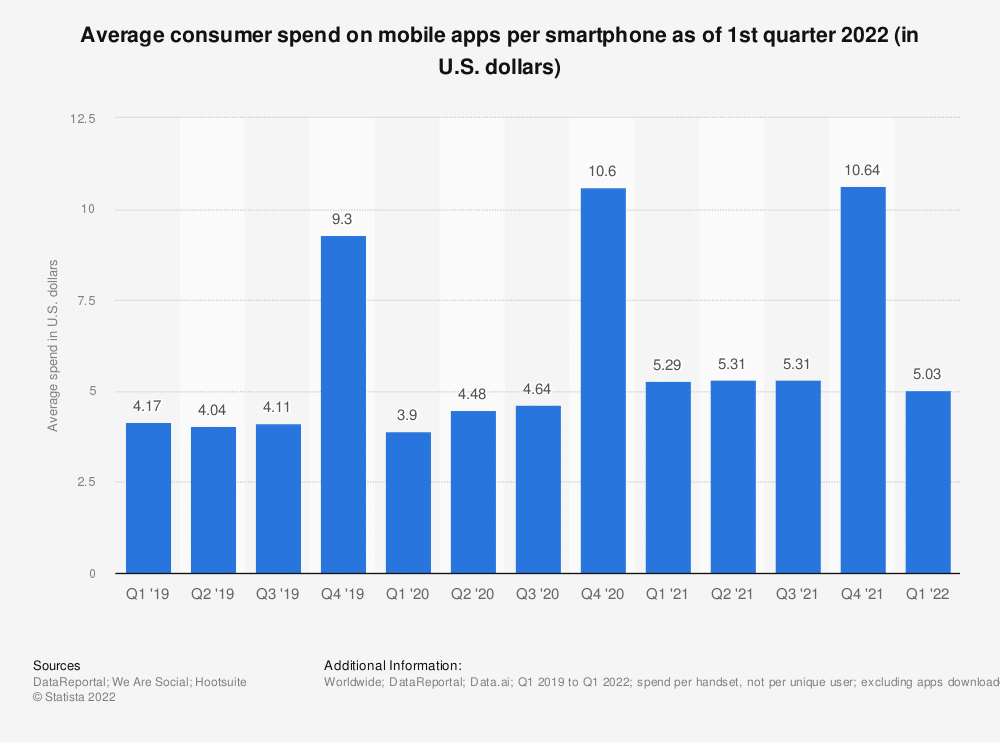
Before you jump into planning your mobile app and looking for mobile app developers, we would like to remind you about a crucial point. Unless you work for a non-profit organization, remember that your mobile app should bring you money (directly or indirectly). Therefore, view your solution as an investment to grow your company and perhaps open new branches or conduct other forms of business development. Once you play your cards right, your mobile app can become a money-making machine.
If you are short on money at the very beginning, we have some good news for you. There are several ways in which you can save money on the online mobile app development process. Sometimes they relate to more effort on your part or sacrificing an element of the app (at least for time being). Nevertheless, you might apply them and still get the result you need. After all, the app is not a purpose on its own, it’s just a tool to serve your business goals. In our next article, you will find practical tips to make your solution cost-efficient.
Looking for cost-efficient mobile apps?
Learn Deviniti’s ways to save on mobile app development without compromising the solution’s quality. 12 money-saving tips are just waiting to be discovered!

